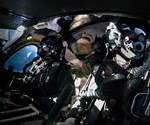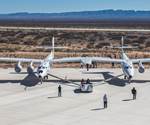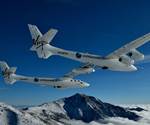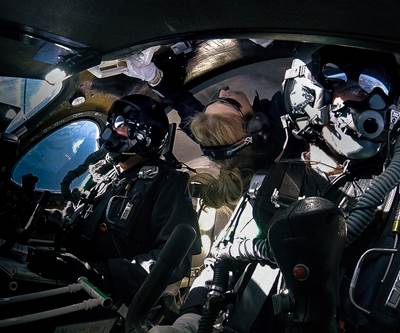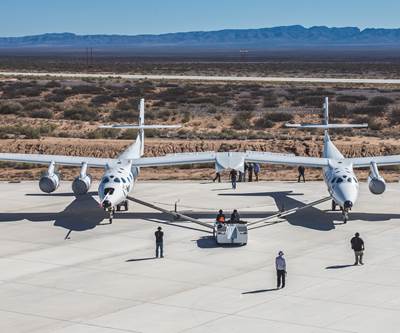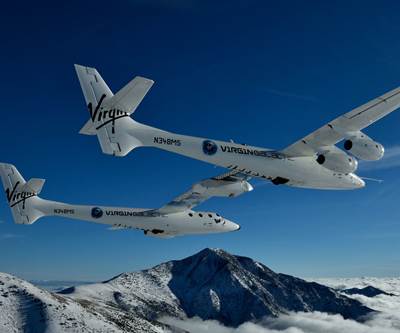Virgin Galactic announces milestones in next SpaceShipTwo manufacture
The fuselage and cabin have been attached to the wing assembly, and the tail booms have been mated to the rear feather flap, moving the ship closer to full assembly.
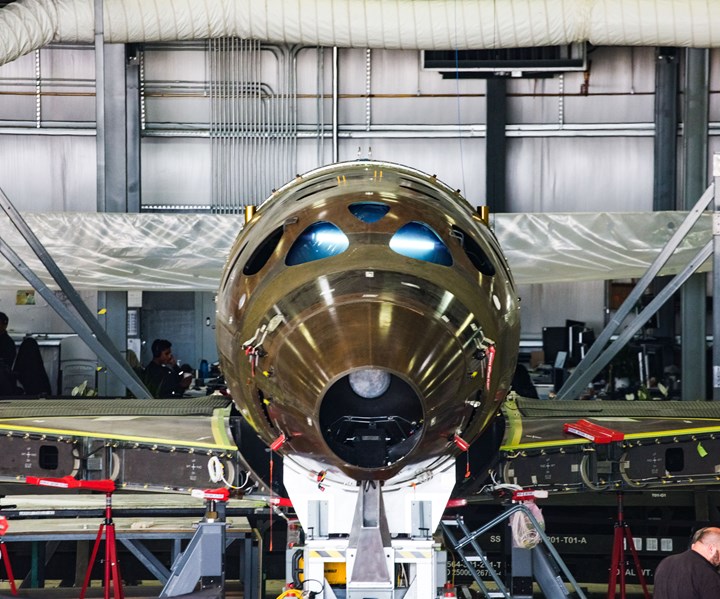
Source | Virgin Galactic
Virgin Galactic (Mojave, Calif., U.S.) has announced two manufacturing milestones for its next SpaceShipTwo spaceship, which is planned to enter service after VSS Unity: the fuselage and cabin have been mated to the completed wing assembly, and the two tail booms have been mated to the spaceship’s rear feather flap assembly.
With these milestones, the part fabrication of the wing, fuselage, cabin, nose and feather flap primary structures is now complete for the second commercial spaceship, the company says. In addition, the majority of systems integration for the wing is complete, as well as the build of the cabin crew station installation.
SpaceShipTwo vehicles are assembled in a modular fashion, with the cabin, fuselage, wing and feather assemblies built in parallel. Employing Design For Manufacturability and Assembly (DFMA) techniques, this approach is said to grant easier access for systems integration earlier in the build process, as well as an overall shorter assembly duration.
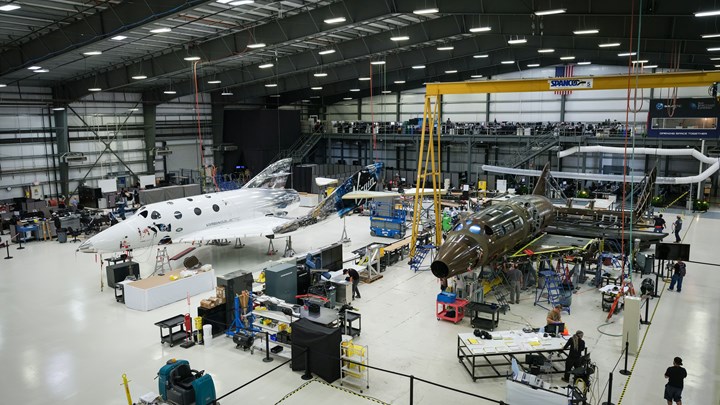
Source | Virgin Galactic
Virgin Galactic established operations in Mojave, through its development and manufacturing arm, The Spaceship Co., to build and assemble a fleet of spaceships and carrier aircraft for the Virgin Galactic operations in New Mexico. While VSS Unity continues to progress through its comprehensive ground and flight testing program, the Mojave-based team has been diligently building two additional SpaceShipTwos.
“Our passionate and talented team has made great progress on the next SpaceShipTwo,” says Enrico Palermo, president of The Spaceship Co. “Our passionate and talented team has made great progress on the next SpaceShipTwo. Seeing VSS Unity adjacent to the assembly of the next vehicle as well as the cabin of our third spaceship makes it very clear that we are building a fleet of remarkable spaceplanes for commercial service.”
Before mating the two assemblies, the metrology team used laser trackers to capture precise measurements of the fuselage and cabin and the wing. These measurements confirmed that the assemblies would come together as they were designed to, the company says.
In parallel to this operation, the feather assembly is taking shape. The inboard skins have been bonded to the boom internal structures and then rotated vertical and mounted on the feather flap assembly. The feather flap assembly is responsible for moving the spaceship’s booms into the feathered position used for stable re-entry through Earth’s atmosphere.
“It is exciting to imagine these two vehicles operating shoulder-to-shoulder from Spaceport America in New Mexico,” says George Whitesides, CEO of Virgin Galactic and The Spaceship Co. “We have a strong block design which we believe we can replicate to build the remainder of the fleet, continuing our march toward commercial service.”
Follow CW’s other Virgin Galactic news coverage:
- The all-composite VMS Eve was relocated to Spaceport America, moving it closer to commercial service, in Aug. 2019.
- In Feb. 2019, the fifth flight test of SpaceShipTwo reached the highest height and speed the spacecraft had yet achieved, and carried a third crewmember aboard for the first time.
- SpaceShipTwo performed its maiden spaceflight in Dec. 2018.
Also see CW’s feature on composites use on Virgin Galactic’s WhiteKnightTwo and SpaceShipTwo.
Related Content
PEEK vs. PEKK vs. PAEK and continuous compression molding
Suppliers of thermoplastics and carbon fiber chime in regarding PEEK vs. PEKK, and now PAEK, as well as in-situ consolidation — the supply chain for thermoplastic tape composites continues to evolve.
Read MoreCombining multifunctional thermoplastic composites, additive manufacturing for next-gen airframe structures
The DOMMINIO project combines AFP with 3D printed gyroid cores, embedded SHM sensors and smart materials for induction-driven disassembly of parts at end of life.
Read MoreComposites manufacturing for general aviation aircraft
General aviation, certified and experimental, has increasingly embraced composites over the decades, a path further driven by leveraged innovation in materials and processes and the evolving AAM market.
Read MoreManufacturing the MFFD thermoplastic composite fuselage
Demonstrator’s upper, lower shells and assembly prove materials and new processes for lighter, cheaper and more sustainable high-rate future aircraft.
Read MoreRead Next
Virgin Galactic reaches new heights, adds third passenger with second spaceflight
The flight marks the highest altitude and speed that the SpaceShipTwo has achieved to date, and included the addition of a third crew member for the first time.
Read MoreLeveraging composites for space tourism
Virgin Galactic’s WhiteKnightTwo will carry its SpaceShipTwo to launch position, then rocket passengers to suborbital space for a heavenly view of Earth.
Read MoreVirgin Galactic moving closer to commercial service
Virgin’s all-composite VMS Eve was recently relocated to Spaceport America where the company has begun operations, implementing a newly designed Mission Control and preparing for commercial service.
Read More
.jpg;width=70;height=70;mode=crop)
